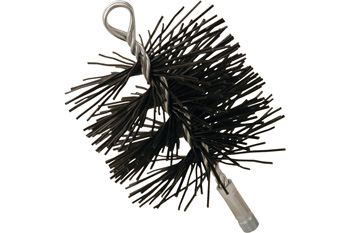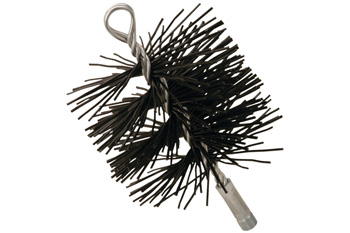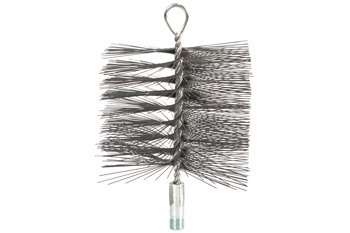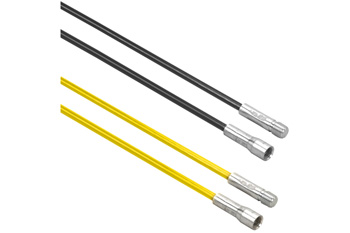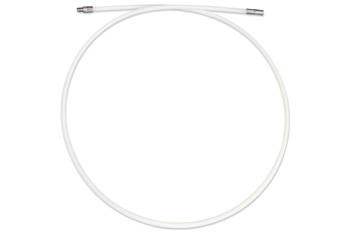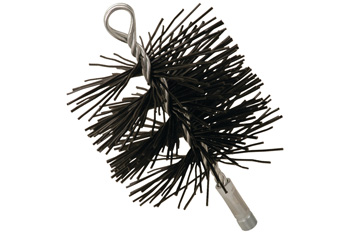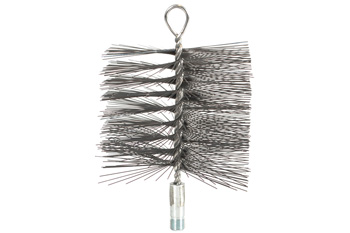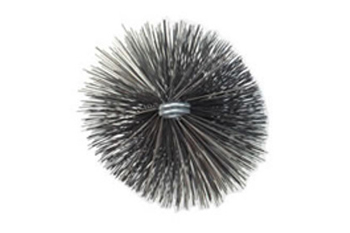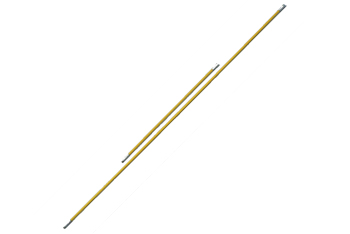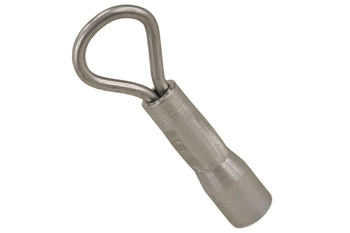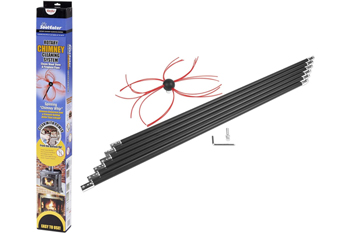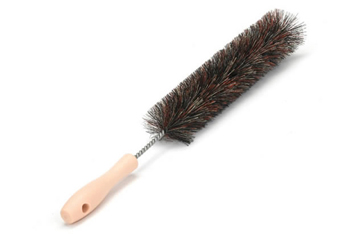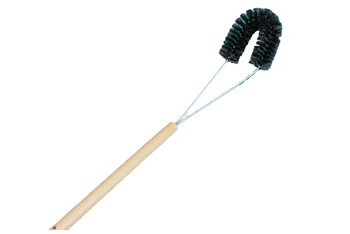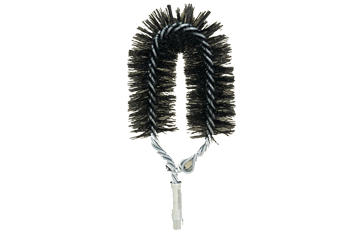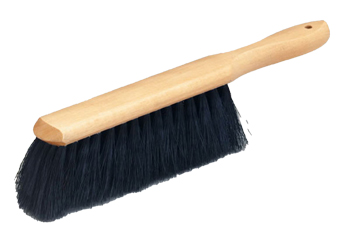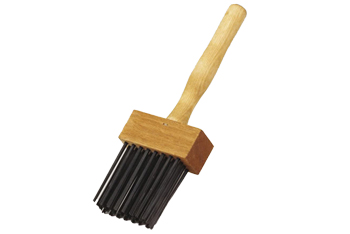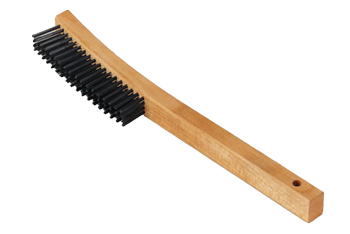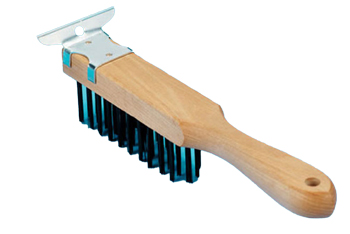Chimney Brushes
Chimneys need periodic inspection and cleaning to maintain efficiency and to reduce the chance of a chimney fire. At Red Hill General Store we stock a variety of products to make cleaning most any chimney easy. Chimney brushes, rods, and accessories are essential tools for maintaining a clean and efficient chimney system.
The chimney brush, typically made from durable materials like nylon, stainless steel, or wire, is designed to scrub the inner walls of the chimney, removing soot, creosote, and debris that can accumulate over time and pose a fire hazard. The rods, which are used to extend the brush to the desired height, come in various lengths and materials, such as fiberglass or steel, and can be threaded together for easy extension. Accessories like chimney brush adapters, chimney cleaning systems, and hand brushes enhance the cleaning process by providing better control, safety, and protection from the mess. Regular use of these tools helps ensure that your chimney operates efficiently, reducing the risk of blockages, dangerous buildups, and carbon monoxide hazards while extending the life of the chimney system.
When selecting the correct chimney brush for your chimney, first measure the inside of your chimney and match that size to a brush below. An oversized brush will not improve cleaning and could become lodged in the chimney. An undersized brush will not provide the pressure on the walls for proper cleaning.
Commonly asked questions about Chimney Brushes
How do I clean the chimney and control the Chimney Brush?
How do I choose a Chimney Brush?
1/4" NPT Chimney Brushes
3/8" NPT Chimney Brushes
Chimney Cleaning Systems
Safely clean your chimney with ease from the ground up, increase the performance of your woodstove or fireplace while decreasing your risk of fire
General Purpose Hand Brushes
Hand held brushes are great for cleaning hard to reach areas like smoke chambers, dampers, corners etc. Comes in a variety of sizes and materials for various jobs.
How do I clean the chimney and control the Chimney Brush?
There are four common methods used in cleaning the chimney and controlling the brush.
Method one: Flexible chimney brush rod - top down. Attach the brush securely to the flexible rod and lower into the top of the chimney adding more rods as necessary to reach the flue bottom.
Method Two: Insert the brush and rod up through the fireplace damper or chimney clean-out door. Add more rods as needed to reach the top of the chimney. This method is often messy since sealing the bottom opening of the chimney cannot be done during cleaning. Make sure to cover the area around the opening to prevent staining carpets, furniture , etc.
Method Three: Line and weight method. This is the best method to use when the top of the chimney is permanently restricted by a covering. Attach a compact 20 lb. weight (minimum) to one end of the the chimney brush using a Chimney Brush Pull Ring and attach a rope that is more than longer enough to reach to the bottom of the flue, to the other brush end. Seal off the chimney opening to prevent soot from entering the home.
Method Four: Dual line method. This method requires two people, one on the roof and the other at the clean-out or chimney opening. Attach a rope to to each end of the brush. Note -- you will need to purchase two Chimney Brush Pull Ring for each end of the brush. Drop one end of the rope to the person below. Cleaning is done by alternately pulling the ropes to move the brush up and down in the chimney.
For all methods sweep or vacuum up all residue prior to using the chimney. Be careful to check for debris behind the damper, on the smoke shelf and in elbows and T-connectors. Clean the chimney brush after each use and coat with a rust preservative (WD-40 spray) works good.
Return to top of page
How do I choose a Chimney Brush?
Use the following guide to select the proper
Chimney Brush for your chimney.
Measurement Instructions:
Measure the inner opening (both directions) of your fireplace or woodstove chimney.
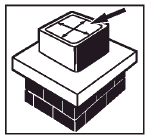
For masonry chimneys you'll need to measure the inner opening dimensions in both directions. Buy a brush that is at least as big as your chimney liner otherwise it will not reach the side walls of your chimney and won't do an adequate job. If you buy a chimney brush that is too big then it will be harder to get down the chimney but will work unless excessively oversized.
Wire bristle chimney brushes such as the Rutland Chimney Sweep & Master Sweep are the most commonly used and do a good job. The Master Sweep series has more bristles and will generally make the job easier and faster. Wire bristle brushes are not recommended for metal chimney flues.
Poly chimney brushes are for use in metal chimneys and older fragile chimneys as they don't scratch the chimney walls. Standard poly brushes are very stiff and may be difficult to work into a very dirty chimney and also do not go around any bends that may be present in a chimney system.
Return to top of page

